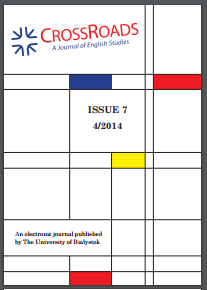Margaret Atwood’s "The Blind Assassin" as a Social Chronicle of 20th Century Canada
Margaret Atwood’s "The Blind Assassin" as a Social Chronicle of 20th Century Canada
Author(s): Ewelina Feldman-KołodziejukSubject(s): Literary Texts
Published by: Wydział Filologiczny Uniwersytetu w Białymstoku
Keywords: Margaret Atwood; Canada; memory; social change; class division; feminism
Summary/Abstract: The aim of this article is to demonstrate through Margaret Atwood’s novel The Blind Assassin the social changes that took place in 20th century Canada. Depicting the fall of a once respected Toronto bourgeois family of Chase, the book covers the period from the early 1900s through World War I, the Depression years, and World War II to the late 1990s. By situating the story of the Chase sisters against the broader backdrop of Canadian history, Atwood presents the transformation from the rigidly divided society of the past into an egalitarian society of the present day Canada. To give The Blind Assassin a deeper sense of history the author incorporated into the novel various documents from the past, such as newspaper clippings. Although many of these cuttings are of Atwood’s contriving and were merely inspired by actual events, they allow the author, through the use of pastiche, to poke fun at a number of dominant ideologies of the past and highlight how profound and inevitable the social changes of the last century were.
Journal: Crossroads. A Journal of English Studies
- Issue Year: 2014
- Issue No: 04 (7)
- Page Range: 4-12
- Page Count: 9

